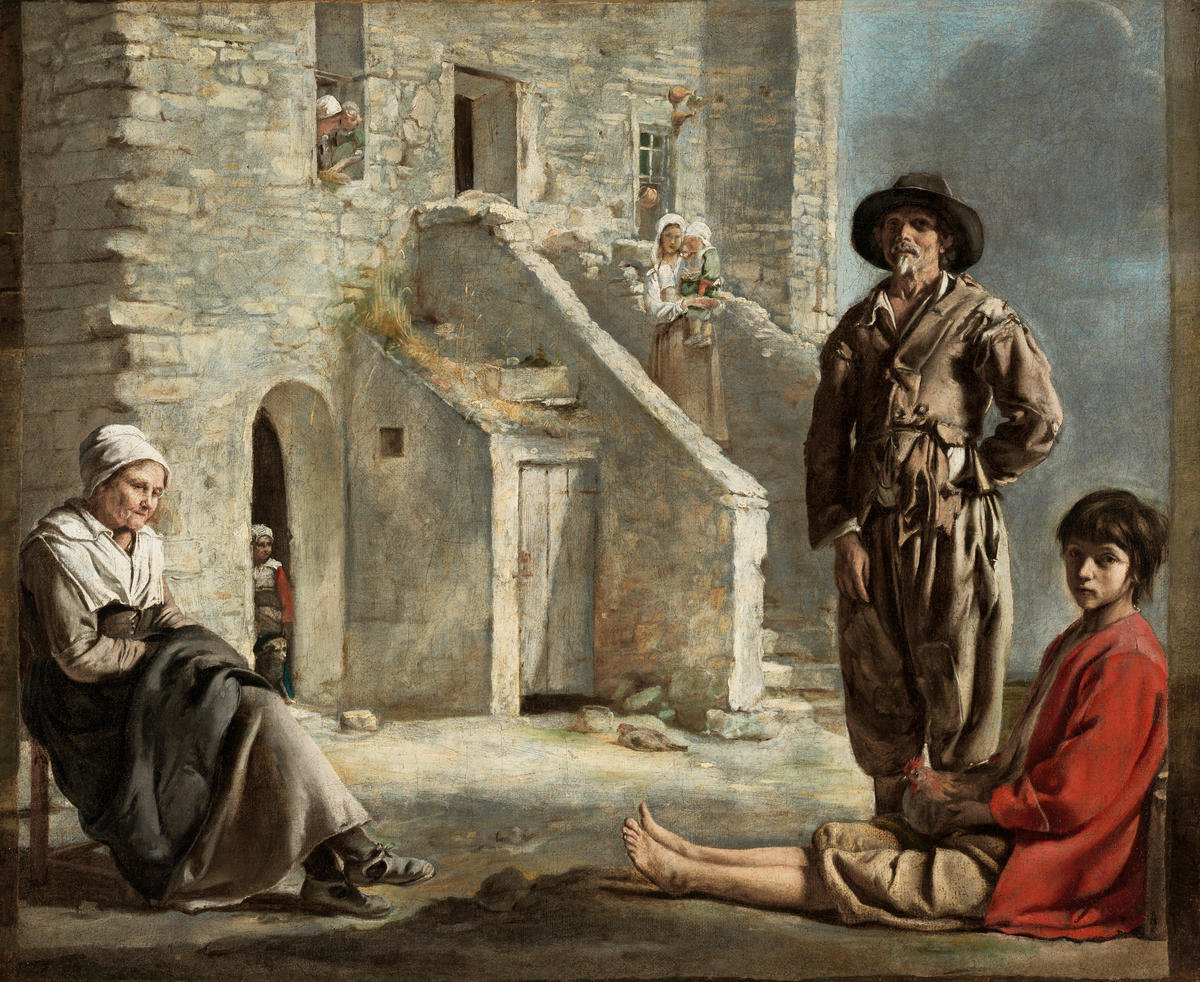Walks: Cold, Windy Hood and Presidio
Distances: 3.5 miles average
 |
| Louis (?) Le Nain (Fr. 1600/1610-1648), Peasants Before Their House, ca. 1641, o/c |
So, in our grey, muted summer weather, Ciwt's attention turns to greyish art. And, if you noticed it above, you might wonder why she put a question mark after the artist's first name. Well, Louis was one of three never married Le Nain brothers who were all born in Laon, formed a workshop together in Paris, specialized in painting peasant life collaboratively as well as individually, stopped dating their works early on, and never signed their work with their first names - just Le Nain. Clearly this has made life a challenge for art historians.
It has become common to treat their work as a single artist. One brother though, Louis, is regarded as the 'genius of the family' and it is thought (but not proved) that this canvas at our Legion of Honor Museum can only have come from him. Why? Louis is described as having been a somber artist, self-contained, shunning elegance and restlessly explored new horizons. With their air of melancholy, it could be he modeled these peasants on himself.
Whoever they were modeled on, these people are clearly earthbound and bound to each other. The earth, the clothing, the stone of the house, the dog, pet rooster, skin tones - even the sky - are all in chalky greys and ochres. The sole exceptions are the boy's red cloak, the rooster's comb and a red sleeve in the lower background doorway.
To Ciwt these moments of red seem to be Louis's painterly decisions about how to add contrast and energy to the canvas. In other technical ways, this is a remarkably well painted canvas. Le Nain's brushwork is confident and proficient. And varied; at times he paints openly and loosely and at others he carefully delineates the details of portraiture close up and in the distance, as well as the wispiness of the grasses on the roof and the facets of the house's stone. The peasants' poses are static but varied and point to Louis's ability to make 'a thousand poses taken from life.'
There's a quiet, stable air of dignity, almost serenity to this family grouping. They may be peasants, but we do not get a sense they are threadbare, destitute, lonely. They have each other, infants, pets, a solid house, things look cleans, their bodies appear strong and healthy. And herein lies a critical rub. For all its realistic and sympathetic portrayal of peasants, there are some who question how 'taken from life' Le Nain's work really was. The native peasants from Le Nain's Laon were actually living in the midst of the Thirty Years War, a time of hardship, anguish, depredation by cruel marauding armies. Yet these people are portrayed as calm, almost docilely engaged in homely activities.
It has been suggested by some scholars that Le Nain intentionally downplayed any misery in order to please wealthy urban patrons. Ciwt thinks yes, artists must sell to survive. But, realistic portrayal or not, there are more important matters at hand. One is the mastery with which the peasants are painted. Another is that they were portrayed at all at a time when more elevated subject matter was to be expected. The third, and most important, is that the Le Nains' art somehow made it to the walls of the Louvre where it very likely had an influence on later realist painters of peasant labor and life and, shortly thereafter, on the gorgeous - and decidely not grey - capturing of everyday life by the impressionists.
No comments:
Post a Comment